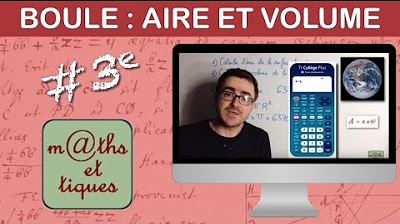Innova Engineering - Mud Calculations
Summary
TLDRThe video explains the mud calculations process using a specialized tool in an over-engineered area. It details how to calculate buoyancy factors for single and multi-fluid scenarios, emphasizing the impact of different fluid weights on buoyancy. For instance, with a mud weight of 9 PPG, the buoyancy factor is 0.86, which changes when the internal fluid's weight is adjusted. Additionally, it discusses hydrostatic pressure calculations based on mud weight and true vertical depth (TVD). This overview serves as a guide for understanding the crucial aspects of drilling fluid dynamics.
Takeaways
- 📊 The clip discusses mud calculations within an over-engineered area.
- 🔧 A blank database is used to access the mud calculation tools.
- 💧 The dialog includes a section for calculating the buoyancy factor for a single model weight.
- 📈 For a mud weight of 9 PPG, the buoyancy factor is calculated to be 0.86.
- 🌊 The multi-fluid buoyancy factor is considered when there are different fluids in the annulus and within the string.
- 🔍 The outer diameter of the string is specified, e.g., 8-inch casing with a 3.5-inch internal diameter.
- 🧪 The external fluid can be set as oil-based mud (OBM), while the internal fluid is set at 9 PPG.
- ⬆️ If the internal fluid is lighter, the buoyancy factor increases; if heavier, it decreases.
- 📏 Hydrostatic pressure can be calculated based on input mud weight and true vertical depth (TVD).
- 💡 Understanding buoyancy factors is crucial for effective drilling operations.
Q & A
What is the main focus of the clip?
-The clip focuses on performing mud calculations using a specific tool within an over-engineered area.
What does the buoyancy effect account for?
-The buoyancy effect accounts for how different fluid densities affect the buoyancy factor of a model.
What is the buoyancy factor for a single model weight with a 9 PPG fluid?
-The buoyancy factor for a single model weight with a 9 PPG fluid is 0.86.
How does the multi-fluid buoyancy factor differ from the single fluid buoyancy factor?
-The multi-fluid buoyancy factor takes into account different fluids present in the annulus and internally within the string, while the single fluid buoyancy factor considers only one fluid.
What parameters are required to calculate the multi-fluid buoyancy factor?
-To calculate the multi-fluid buoyancy factor, you need the outer diameter (OD) of the string, the internal and external fluid densities, and the model's weight.
What happens to the buoyancy factor if the internal fluid is lighter than the external fluid?
-If the internal fluid is lighter than the external fluid, the buoyancy factor increases.
What effect does increasing the weight of the internal fluid have on the buoyancy factor?
-Increasing the weight of the internal fluid decreases the buoyancy factor.
How is hydrostatic pressure calculated in the tool?
-Hydrostatic pressure is calculated by inputting a mud weight and a true vertical depth (TVD).
Why is it important to understand buoyancy factors in drilling operations?
-Understanding buoyancy factors is crucial in drilling operations as it affects the efficiency and safety of the drilling process.
Can the buoyancy factor vary with different fluid weights?
-Yes, the buoyancy factor can vary significantly based on the weights of the fluids used internally and externally within the drilling string.
Outlines

このセクションは有料ユーザー限定です。 アクセスするには、アップグレードをお願いします。
今すぐアップグレードMindmap

このセクションは有料ユーザー限定です。 アクセスするには、アップグレードをお願いします。
今すぐアップグレードKeywords

このセクションは有料ユーザー限定です。 アクセスするには、アップグレードをお願いします。
今すぐアップグレードHighlights

このセクションは有料ユーザー限定です。 アクセスするには、アップグレードをお願いします。
今すぐアップグレードTranscripts

このセクションは有料ユーザー限定です。 アクセスするには、アップグレードをお願いします。
今すぐアップグレード関連動画をさらに表示

Windows Super God Mode (Advance God Mode) | #taknikisamadhan

CARA MENGHITUNG LUAS JURING LINGKARAN #juringlingkaran #lingkaran

5. Pengujian Rheology Lumpur

Math 5 Quarter 1 Week 6 Revised K-12 Area Of A Parallelogram, Triangle, And Trapezoid

Excel What-If Analysis Data Table | Easy to Use Once you Learn This☝️

Calculer l'aire et le volume d'une boule - Troisième
5.0 / 5 (0 votes)
